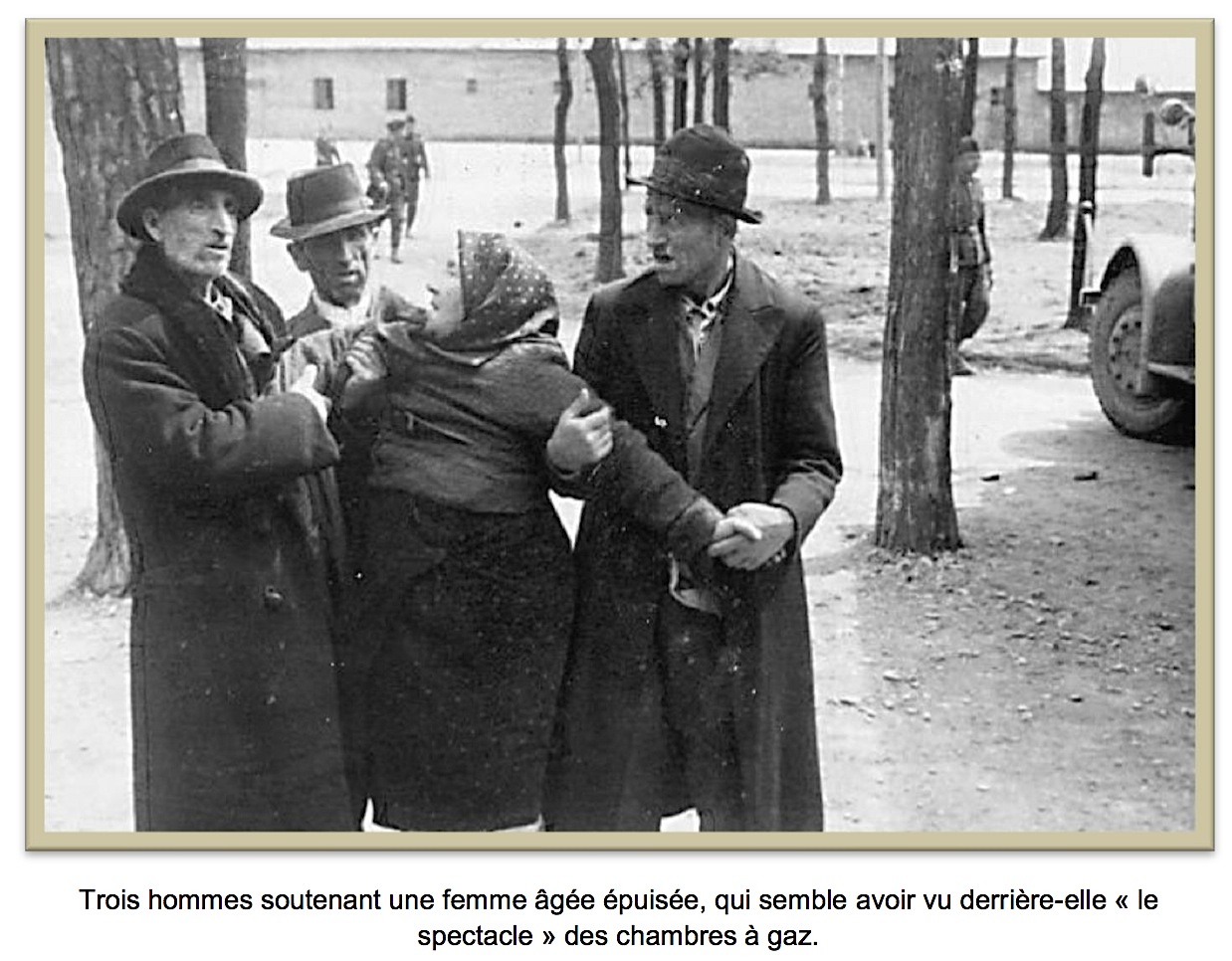Regarding the photograph of the 3 men holding the woman that the “New Eric Hunt” is highlighting as part of his conversion away from “denial”here is the original from the L'Album d'Auschwitz:
http://collectifhistoirememoire.org/collectifhistoirememoire.org/UserFiles/file/ALBUM_AUSCHWITZ.pdf

- ALBUM AUSCHWITZ pic of 3 men and a woman.jpg (279.27 KiB) Viewed 4110 times
The caption in the image (click image to enlarge) reads in French:
“Trois hommes soutenant une femme âgée épuisée, qui semble avoir vu derrière-elle « le spectacle » des chambres à gaz.”
Using Google Translate we get:
“Three men supporting an exhausted elderly woman, who seems to have seen behind her the "show" of the gas chambers.”
Could someone check that the English translation is basically correct? If this is so, then, in other words, the men are merely supporting the woman who is distressed by seeing the “gas chambers” behind her, rather than forcing her into a "gas chamber".
Then we have Pressac’s interpretation, found here:
https://www.historiography-project.com/books/pressac-auschwitz/421.php“Photo 14 [Photo 12 of “Album d'Auschwitz” by Serge Klarsfled]
During the extermination of the Hungarian Jews found unfit for work in May-June 1944, this is the only photo we have of some of them between Krematorien IV and V. This woman and the three men are about to enter the vestibule of Krematorium V. They have less than an hour still to live.”
He goes on:
“... Krematorium V was still used, however, as shown by these four Jews directed towards the entrance to its vestibule. Their bodies were no doubt not to be cremated in the furnace, but in the open-air ditches dug parallel to the north wall and thus hidden from view by the building. A three meter high hedge was later erected to hide activities completely.
This very important photograph was “analyzed” (or “conjured away") by Robert Faurisson on pages 8 and 9 of a pamphlet of 17 pages dated 9th Decemher 1983 and entitled “Les Tricheries de l'Album d'Auschwitz” (The Tricks of the Auschwitz Album) distributed to the media following publication of the Album. The author will not repeat Faurisson's entire argument here, but the gist of it was: Pressac was half intoxicated — by his drugs — when he tried, floundering and in vain, to “pathose” (verb coined from “pathos") this photograph, which clearly has nothing tragic about it for it is obvious that the woman is tightly clasping the hand of the man on the right. Such reasoning on the part of a man still a university professor leaves one flabbergasted if not stunned.
His inability to prove that these four Hungarian Jews were anywhere else than at four or five meters from the entrance to the vestibule of Krematorium V does not embarrass him in the least. There is none so blind as he who will not see. As for the woman's attitude, it could simply be that she, with no illusions about what is to happen and having seen the SS photographer, suddenly turned away, saying in effect Ï don't want that [bastard of an] SS to photograph me!” Such a reaction would not be surprising, for some of the Jewish children, less polite and more spontaneous than their parents, instinctively feeling that the SS wished them no good, pulled faces at the photographers.”
Pressac’s interpretation is that
the four of them are all going to be gassed! One unwilling woman and three willing men! Right!
Now we get to the “New Eric Hunt” interpretation:
“This is an elderly Jewish woman being forcibly restrained and forced into the entrance of Auschwitz-Birkenau’s Crematorium 5 to be gassed. The cameraman is steps in front of Auschwitz II – Birkenau’s Crematorium 5, the entrance is close to his back. Crematorium 4 is and a pathway is in the background. Various armed guards and a truck are visible. I put forward that an uncomfortable hidden truth of this photograph is that those manhandling the woman are apparently the “Sonderkommando” Jews. These were Jews forced to work in the process of gassing and cremating doomed Jews.”
He goes on:
“This woman may have heard the rumors, or otherwise realized she was going to be executed. She may have heard screams from inside the crematorium. She is being dragged towards a gas chamber in Crematorium 5 by three Jewish “sonderkommando” against her will and resisting with her might and last breaths. Look at those restraining her. They almost look like gangsters, don’t they? Look at their clothing, possibly assembled in accordance with sonderkommando testimony from the former dress of those rich Jews gassed beforehand. Judging from body language, the “Nosferatu” looking man on the left have tried to calm her with lies, such as “it’s just a shower” which lines up with sonderkommando testimony.”
Now to me, the most reasonable interpretation is Faurisson's. That the men are simply assisting or helping her. Also note the nonchalant manner in which the soldiers are walking in the background. Is that likely behavior when someone is being "dragged" to a “gas chamber”? I don’t think so. I have some queries about the photo itself, but maybe later.




